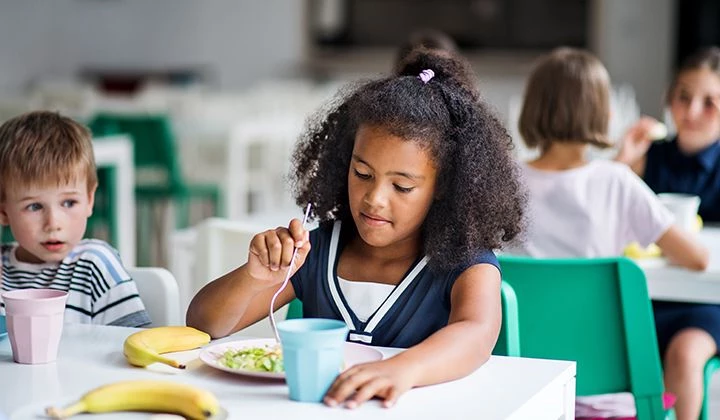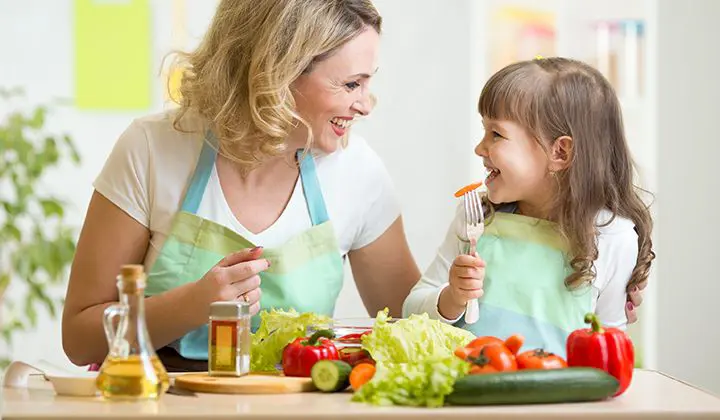Eating Safely
Mealtimes are an essential part of your child’s development – from promoting good nutrition to forming social bonds. To encourage safety while eating, it’s important to instil the ‘Sit, Chop, Chew’ method when children are young. Reports suggest that more than 60% of parents feel their top medical concern is choking, so learn how to enjoy mealtimes safely with Mini First Aid.

The top choking hazards for children
While choking is more common in babies due to smaller airways, there are still hazards as your little ones grow older. In particular, carrots, hot dogs, nuts and firm fruits such as apples have been named as some of the most hazardous foods if they are not prepared properly. Adults should always chop these into small, irregular pieces to avoid clogging airways. Notably, grapes should be cut lengthways as they have a smooth surface which makes them tricky to remove.
Hazards are not only present in the food themselves. You should always supervise young children when they’re eating, and make sure they are sitting up. Children are more likely to choke if they are lying down, or taking part in another activity while eating.

The ‘Sit, Chop, Chew’ method
The ‘Sit, Chop, Chew’ method helps to promote safer eating by keeping your child focused and preventing hazards. Firstly, you should encourage children to sit on their bottoms, ideally at the table so that they’re not tempted to move around. Make sure they’re sitting up straight and not lying down. You can use a teddy to demonstrate.
Next, you should emphasise the importance of cutting food into bite-size pieces. Depending on the food and how old your child is, you may have to chop the food for them. Encourage them to ask an adult if they’re not comfortable chopping food such as fruit and vegetables into small pieces.
Finally, teach them to chew slowly and fully. Before you eat, you can point to your teeth and ask them what they do, before mimicking the action. Remind them to take their time and enjoy their food before they swallow.

Chopping food sensibly
If your child feels confident enough to chop his or her own food, then make sure you have plastic, child-sized utensils that are blunt. If the food is tricky to cut, such as firm fruits, you can chop it for them before you sit down at the table.
As a general rule, you should chop food into chunks no more than 0.5 inches long. You need to be especially wary of round foods such as grapes, which should always be chopped lengthways or even cut into quarters for younger children. Try to avoid stringy foods like celery.
If in doubt, chop into smaller pieces. You can demonstrate in front of your child by using plastic cutlery. For foods that tend to clag, such as peanut butter, you should provide plenty to drink. Let any minders or teachers know if your child has allergies.

In case of emergency
If your child has a piece of food stuck in their throat, you should slap their back firmly up to five times, between the shoulder blades. Remind other children that this is not a game – it should only be used to dislodge food if the child cannot breathe properly.
The NHS recommends that you encourage your child to cough if he or she is coughing loudly. This likely means that the food is close to being dislodged. If your child’s choking is silent, clench your fist between their tummy and breastbone, with your other hand on top. Try up to five abdominal thrusts. Call an ambulance on 999 if nothing comes out.
You should also teach older children to recognise when their siblings are choking. Remind them to pay attention while eating and listen out for coughing. They should shout for help if an adult isn’t present.
Quiz time for parents
What are the three most important things to remember when eating?
Congratulations
You've now learnt all about how to teach your children to eat safely - you're ready to move on to 'getting help in an emergency'!

